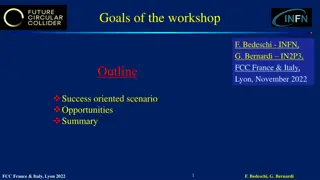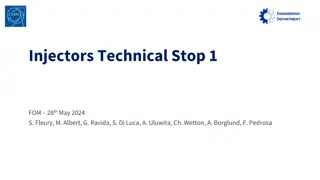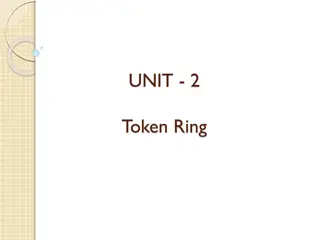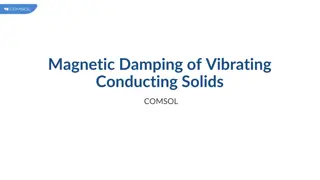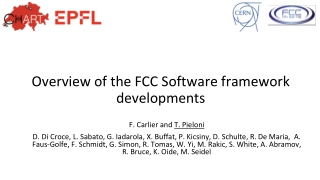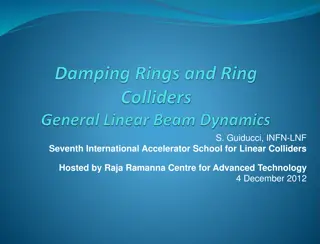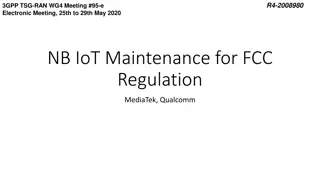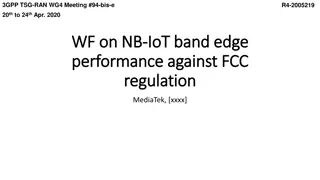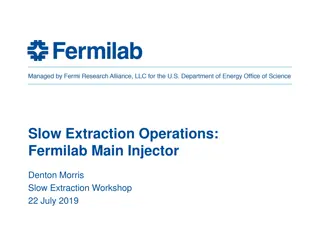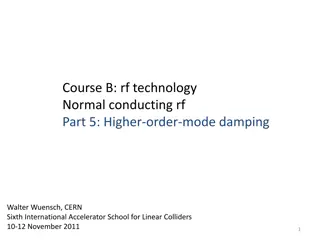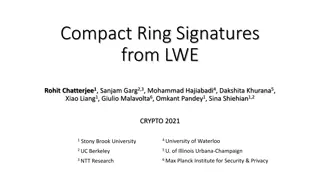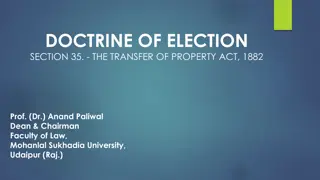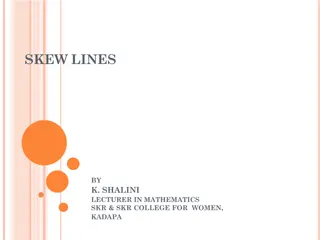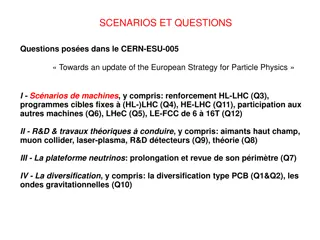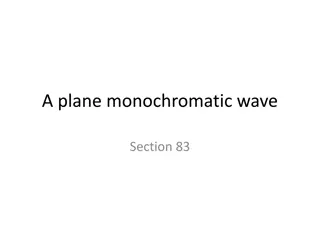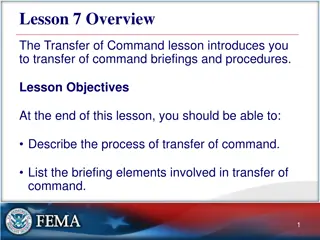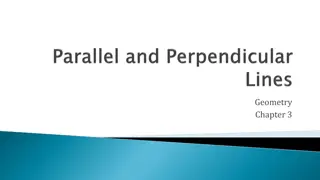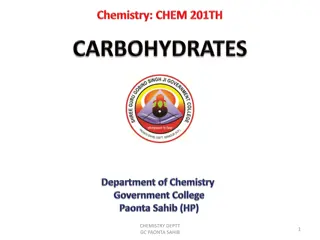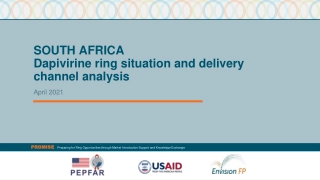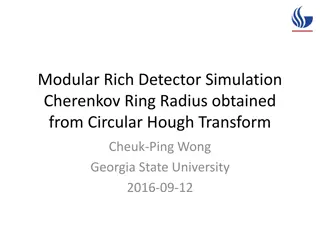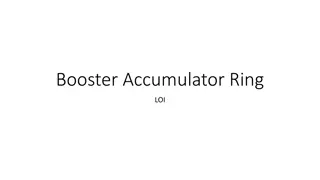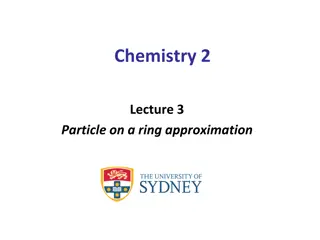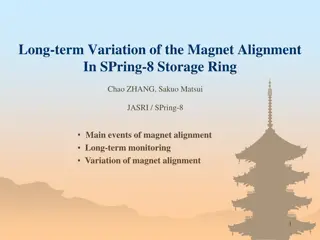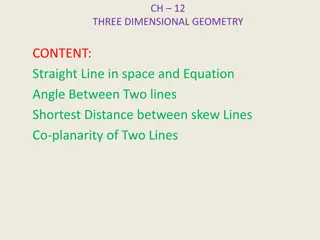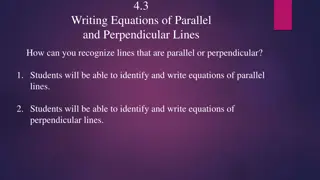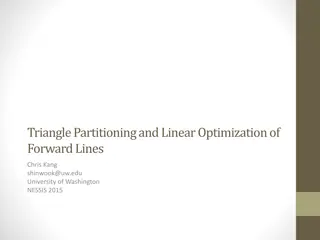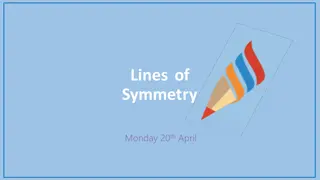Overview of Damping Ring and Transfer Lines for FCC-ee Pre-Injector Complex
The Damping Ring and Transfer Lines play a crucial role in the FCC-ee Pre-Injector Complex, aiming to damp the emittance of both beams and operate the damping ring at higher energy levels. Coordinated by experts like C. Milardi and A. De Santis, the project includes designs for the Damping Ring, Transfer Lines, and Energy/Bunch Compression. Various collaborations and detailed parameters are outlined to ensure the successful operation of the complex.
Download Presentation

Please find below an Image/Link to download the presentation.
The content on the website is provided AS IS for your information and personal use only. It may not be sold, licensed, or shared on other websites without obtaining consent from the author. Download presentation by click this link. If you encounter any issues during the download, it is possible that the publisher has removed the file from their server.
E N D
Presentation Transcript
Damping Ring and Transfer Lines for the FCC-ee pre-Injector Complex Simone Spampinati?, Catia Milardi?, Antonio De santis?, Ozgur Etiksen?,? (a) INFN Laboratori Nazionali di Frascati (b) Kirikalle University, Turkey 06/05/2024 L'INFN e la Strategia Europea per la Fisica delle Particelle 6-7/05/2024
FCC-ee pre-Injector complex layout This version of the layout has been used as a reference for project feasibility evaluation and cost estimation in the midterm review report Alternative designs are considered to damp the emittance of both beams and operate the damping ring at higher energy hence 2.86 GeV Project structure: WP1/2: Electron Source, Electron and Positron Linacs WP3: Positron Source: Target and Capture System WP4: Damping Ring and Transfer Lines WP6: PSI Positron Production (P3) Project
FCC-ee pre-Injector (WP4) WP4 coordinated by C.Milardi 1) Damping Ring design (coord. C. Milardi) A. De Santis, O. Etisken,Y. Dutheil (Injection equipment: septa & kickers) CERN collaboration on RF systems. 2) Transfer Lines design (coord. A. De Santis): C. Milardi, S. Spampinati. 3) Energy/Bunch Compression design (coord. S.Spampinati): C. Milardi, A. De Santis, CERN collaboration (e+ LINAC group)
Injector parameters (Z-mode) INJECTOR PARAMETERS 4 K. Oide, FCC week 2023 talk SPS 6 4.0* 200 2 25 HE Linac 20 4.0* 200 2 25 Unit GeV nC Hz *Maximum charge to be injected into the collider rings 4 nC (bunch pop. 2.5x1010particles) Injection energy Bunch charge both species Repetition rate Number of bunches Bunch spacing Target bunch length and energy spread at the linac end, TL from HE linac to booster will include an energy compression (and bunch decompression) ns Normalized emittance (x, y) (rms) 10,10 10,10 mm mrad Bunch length (rms) Energy spread (rms) ~1 0.3 ~1 ~0.1 mm % The bunch by bunch intensity will arbitrarily vary from 0 to 100%, depending on the intensity balance between the collider rings Bunch-by-bunch intensity fluctuation: 5% (Z mode), 3% (WW, ZH, tt)
Positron damping ring system (WP4) purposes Positron beam at the positron linac exit (1.54Gev) Parameter Value 3mm mrad Geometric Emittance(rms,x,y) Energy spread rms 5% Bunch length (rms) 4.5mm Bunch duration 15ps Nominal parameters at the entrance of the common linac (1.54Gev) Parameter Value 1.9nn rad Geometric Emittance(rms,x,y) Damping ring Energy spread rms 0.7% Bunch length (rms) 1mm Bunch compressor Bunch duration 3.3ps
Positron damping ring system (WP4)design status pTLi: positron transfer line injection in DR cBD: common diagnostic Beam Damp pBD: positron diagnostic Beam Damp pDR: positron Damping Ring pTLe: positron transfer line extraction from DR
Transfer lines pLINAC - DR Transverse emittance is preserved in both planes
Positron damping ring layout Parameter Circumference Harmonic number Eq. Emittance (x/y/z) FCC_ee DR 239.2 m 319 0.96 nm/ - / 1.46 mm 0.21 m, 0.66 T 4, 6.64 m, 1.8 T 2, 1.5 m, 4 MV Dipole length, Field Wiggler #,Lenght, Field Cavity #, Lenght, Voltage Bunch stored #, charge Damping Time (x/y/z) 18 , 4.0 nC 10.8 / 10.8 / 5.4 ms Store Time Energy loss per turn SR Power Loss (WGL ) 42.5 ms 0.227 MV 15.7 kW Current DR shopping list: 232 BEND (21 cm each) in the arcs 258 QUADRUPOLE (20 cm each mostly in the arcs) 232 SEXTUPOLE (8 cm each mostly in the arcs) 4 WIGGLER (6.7 m each: 44 poles of 5 cm each) 2 Straight section hosting RF Cavity and Injection/Extraction equipments 8/
DR dynamical aperture Tracking has been performed with PTC (MAD-X interface) over ~15% damping time neglecting radiation damping. The estimated loss of accuracy is below 1% at the nominal energy. The stability region in the transverse plane has been evaluated for different energy deviations. Contours represent regions where >90% of the initial conditions lead to successful tracking The transverse stable region is shown for the nominal beam energy (1.54 GeV - black) and for 2%(left), 4%(right) energy relative deviation (blue and blue). The stable region is kept quite constant within 2% energy spread. It shrinks significantly for higher deviations
Energy compressor The aim of the energy compressor is to maximize the number of particles accepted in energy by the DR ( 1.54 -/+ 2% ) A four-bending C-shape chicane. Dispersion and second order dispersion closed by symmetry. Two cavities of the type used for the positron LINAC ( LINAC 2022) THPOJO08) Beam fraction in E0-/+2% Energy distribution
pDR acceptance of the pLINAC particles Particle beam beam prepared with a start-to-end simulation. Positron linac simulated with RF_TRACK. Energy compressor and injection TF are simulated with elegant DR acceptance: Survived particles at 10k turns (PTC-MADX): 59794/71800 = 83% The picture shows the transverse distribution of the survived particles according to their positions at e+ linac exit. The coordinate of the dead particles can be used to study a possible reduction and collimation of the positron beam coming from the source
Damping ring collective effects A parametric estimate of DR (current optics/layout) collective effects has been done No major limitations are expected from longitudinal micro-wave inst. (LMI), transverse mode coupling instability (TMCI), and coherent synchrotron radiation (CSR) Analytical estimate of the power emitted by SR in the DR. FII must be further investigated SC-induced tune shift might be an issue The simulations of e-cloud build-up and instability have started. Simulation of the e- cloud build-up in the DR bending with several patterns considering the actual layout and optics of the damping ring e-cloud simulation strategies are under testing using DAFNE e+ beam that is the only positron beam in Europe. Measurements have already been taken. This activity will be reported at IPAC 2024 in the contribution WPR008
Transverse Emittance evolution in the DR icluding IBS The transverse emittance in the damping ring is reduced by three orders of magnitude The initial emittance is 3 mm mrad in both planes The final emittance are ex= 1.29 nm rad, ey= 1.03 nm rad Emittance dilution from IBS 30%. Evaluated with a MAD-X module for a 4pC bunch
Positron bunch compressor Six cells Total R56 =0.40m horizontal phase advance between cell 3 and 4, small H in the cells Sextupoles in the cells: second order disersion compensation and phase space linearization One cavity to chirp the beam. Accelerating voltage 54 MV (70.5MV available) Two cavities to remove part of the chirp. Accelerating voltage 110 MV (max140MV) phase advance (x)
Bunch compressor performances Bunch compressor performance evaluated with simulation with the code elegant. 1D CSR module, 4M macroparticle. The compression preserves with good approximation the Gaussian current profile Phase space dominated by the linear chirp and uncorrelated energy spread Final rms bunch length 1.0 mm Compression factor 5 energy spread 6.5*10^- 3. Emittance dilution <4% horizontal and <3% vertical Phase space Current profile
Longitudinal Beam Diagnostics Deflector length 0.5m Deflecting voltage 5MV ( 2.8GhZ) Non-deflected beam Sigma y= 31 m Deflected beam sigma y= 877 m Rms bunch length reconstructed from y profile 1.07 mm instead of 1.08 mm (0.94 mm from gaussian fit) RF Deflecting cavity Quadrupoles Screen D Beam current profile Vertical profile on the screen
Costs estimation An estimation of the cost of the systems included in the WP4 has been prepared for the injector baseline The present design has been used to estimate the costs The total cost for the systems included in the WP4 is esteemed in 67 MCHF The esteem of the cost of the damping ring is 43 MCHF The esteem of the cost of the bunch compressor is 8.8 MCHF The esteem of the cost of the energy compressor is 2.2 MCHF The remaining 13MCHF for the FODOs, the MATCHING sections and the diagnostic sections
HIHigh-energy damping ring design 18 The present positron yield would allow positrons to be generated at a lower electron beam energy. Common linac: Rep rate 200 Hz instead of 400 Hz less average rf power, higher accelerating gradient, shorter linac. Dedicated linac for electron and positron Overall, the cost is expected to remain under control, we are also planning to replace SC RF cavity with NC type
High-energy damping ring design Two options are considered The design of the FCC DR is composed of 3 arcs and 3 straight sections FCC-DR (NO DQ)Arcs consist of 16 FODO cells and each of the straight sections has 5 FODO cells Arcs consist of 21 cells and each of the straight sections has 6 FODO cells FCC-DR (DQ)
Conclusions DR and TLs design has been completed A DR acceptance larger than 80% can be achieved with the help of an ECS installed between the pLINAC and the DR injection line. A BCS, that can provide maximum compression factor C ~ 5, has been included in the return line from the DR to Common LINAC. A list of the components used for the different parts and a cost evaluation has been prepared Evaluation of collective effects ongoing. e-cloud simulation strategies are under testing using DAFNE e+. DAFNE could be used as a test facility. DAFNE as a possible test bench for FCC-ee, C.Milardi, F Zimmerman, FCCIS 2023 WP2 Workshop, Rome Alternative DR designs are being considered. Now the focus is on a design based on a damping ring at a higher enrgy
Acknowledgment Many thanks to all the Colleagues of the FCC-ee pre-Injector Collaboration This work was done under the auspices of CHART (Swiss Accelerator Research and Technology) Collaboration, https://chart.ch FCCIS: 'This project has received funding from the European Union's Horizon 2020 research and innovation program under the European Union's Horizon 2020 research and innovation program under grant agreement No 951754.'
Feedback from Mid-term review Main Recommendation: optimize the Injector, especially the linac design and subsequently adjust Technical Infrastructure cost for length and power density Mitigation of the potential risk due to the common linac operating at 400 Hz o Reducing the gradients and thus the dissipated rf power thermo-mechanical simulations to evaluate the cooling system for the rf structures and prototype phase for klystrons, HV modulators and RF structures common linac at 400 Hz o Use a DR at higher energy to avoid to accelerate electron and positron bunches in the common linac during positron production common linac at 200 Hz Overall reduction of the repetition rate o considering the option of using four bunches in the injector to reduce the repetition rate from 200/400 Hz to 100/200Hz. o with DR at higher energy repetition rate 100 Hz!
e-CLOUD in the DR Simulations have been performed for the dipole magnet of the current damping ring design. E-cloud build up formation for different SEY curve maximum values.
Linearization with sextupoles Sextupoles optimized to cancel second-order dispersion Sextupoles at zero
Phase space Beam diagnostics in the DBD Transverse distribution on screen Phase space Sextupoles on Sextupoles off
pTLe: Extraction transfer line TBA FODO


